

Youth Basketball Parents – 9 Tips To Help Your Child Succeed! ~ Basketball Manitoba. 9 Digital Learning Tools Every 21st Century Teacher Should Be Able To Use. The 21st century is a time of rapid change, and while the brain may not be changing (much), the tools we use to feed it are.
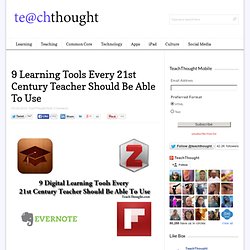
This puts the 21st century teacher in a critical spot–of mastering constantly evolving technology and digital learning tools–the same tools their students use every day. So below, we’ve started with 9 such tools, but this is obviously just scratching the surface. This list is not meant to be exhaustive (obviously), or even authoritative (but rather, subjective).
This is the 21st century, after all. Months after this post is published 2-3 of these tools could be outdated, and if this turns up in the Google search results of a query in 2018, they may seem downright laughable, but here and now, this is a fairly accurate litmus test of what the kinds of tools the average 21st century teacher can be expected to use and master. Annual Events. Teachers are Learning Designers. Late in 2012, I wrote a blog for the Huffington Post that articulated what I really feel should be and is a role of great teachers.
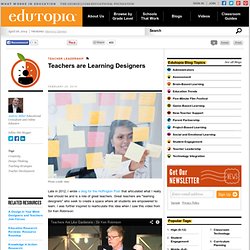
Great teachers are "learning designers" who seek to create a space where all students are empowered to learn. I was further inspired to rearticulate this idea when I saw this video from Sir Ken Robinson: What really struck me is that great teachers create the conditions for success, just as gardeners do. You can't make a flower grow, but you can design and improve the condition for that flow of naturally occurring events. It's the same for our students. Empower Yourself For so long, teachers have been disempowered to design. Stop Blaming Kids There is one pitfall in Sir Ken Robinson's metaphor of teachers as gardeners and students as fruit. Revise and Reflect.
21C learners need 21C teachers. "If your school, and your school day, is not about students collaborating, connecting, and building knowledge and understandings together, why would anyone come?
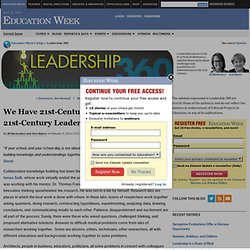
" - Ira David Socol Collaborative knowledge building has been the path from which most innovation has emerged. Jonas Salk, whose work virtually ended the polio epidemic, began thinking about a cure when he was working with his mentor, Dr. Thomas Francis on an influenza vaccine. From there, Salk's innovative thinking spearheaded the research. Promoting a Culture of Learning. Learning is a culture.
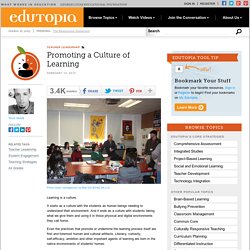
It starts as a culture with the students as human beings needing to understand their environment. And it ends as a culture with students taking what we give them and using it in those physical and digital environments they call home. Even the practices that promote or undermine the learning process itself are first and foremost human and cultural artifacts. 3 Instructional Learning Strategies for Problem Readers. As educators, we are always looking for new techniques to help our struggling readers.
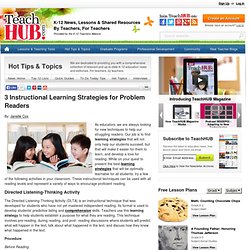
Our job is to find learning strategies that will not only help our students succeed, but that will make it easier for them to learn, and develop a love for reading. While on your quest to present the best learning strategies that will be optimally learnable for all students, try a few of the following activities in your classroom. These instructional techniques can be used with all reading levels and represent a variety of ways to encourage proficient reading. Directed Listening-Thinking Activity The Directed Listening-Thinking Activity (DLTA) is an instructional technique that was developed for students who have not yet mastered independent reading. Procedure. Helping Students Understand What a Test Is and Is Not. We are facing a problem with tests in education.
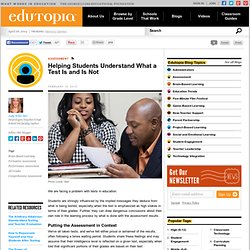
Students are strongly influenced by the implied messages they deduce from what is being tested, especially when the test is emphasized as high stakes in terms of their grades. Further, they can draw dangerous conclusions about their own role in the learning process by what is done with the assessment results. Putting the Assessment in Context. Different examples of formative assessment.
A Guidebook for Social Media in the Classroom. Is Social Media Relevant?
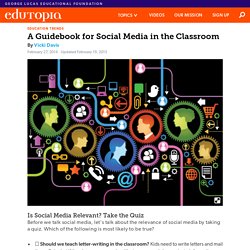
Take the Quiz Before we talk social media, let's talk about the relevance of social media by taking a quiz. Which of the following is most likely to be true? ☐ Should we teach letter-writing in the classroom? Kids need to write letters and mail them. The Social Media Answer ☑ There's one form of writing that can arguably get someone fired, hired or forced to retire faster than any other form of writing. One form of writing is that powerful. Teaching Students to Embrace Mistakes. For the last ten years, we've worked one-on-one with students from elementary school through graduate school.
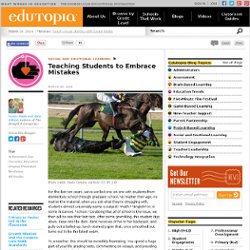
No matter their age, no matter the material, when you ask what they're struggling with, students almost universally name a subject: "math," "English" or, in some instances, "school. " Doubting that all of school is the issue, we then ask to see their last test. After some grumbling, the student digs down, deep into the dark, dank recesses of his or her backpack, and pulls out a balled-up, lunch-stained paper that, once smoothed out, turns out to be the latest exam.
To a teacher, this should be incredibly frustrating. You spend a huge part of your life grading tests, commenting on essays, and providing thoughtful feedback on homework assignments . . . only to have them wadded up and ignored. The Science Behind Mistakes Telling students they need to take advantage of the feedback they get isn't just good advice -- it's established science. Picture a classical violinist rehearsing.